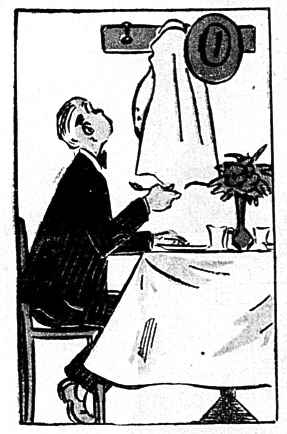Italy Bombarded: D-Day But One Week Away.

"Civilians Swarm to Rome" (in headline above) because trouble is ahead.
Introduction:
In late August 1943, Canadians in Combined Operations attached to the 80th Flotilla of Landing Craft, were in the last days of rest and recuperation in Valetta (Malta) after Operation HUSKY and about 30 days of work in Sicily. While on the island of Malta the sailors had to repair landing crafts damaged during the Sicilian campaign in preparation for the next operation in Italy, i.e., Operation BAYTOWN. Unbeknownst to the sailors, D-Day Italy was scheduled for September 3rd, one week away from the date on the above newspaper - The Winnipeg Tribune (digitized).
Please link here to explore the newspaper more fully.
About those days prior to D-Day my father (member of RCNVR and Combined Operations) wrote a few lines in his Navy memoirs and The Tribune provided stories, cartoons and more.
My father writes:
In a newspaper article he penned in the early 1990s (entitled "Food, Sustenance and Mail were Found in Malta") he says:
*Editor - The one man is likely Allan Adlington, still living in London, Ontario at time of writing this post. He was hit by a bullet on the first or second day of Operation HUSKY.
My father continues:
We conserved parcels for a rainy day and were dispersed to ships and tents to live for a few days while our stoker got the engines on each craft ready for the invasion of Italy. Of course, no one knew when that would be, but urgency was the order of the day and repair parts were non-existent. We toured the island of Malta and some sailed over to Gozo, another small island. We mingled with the inhabitants but generally we took the opportunity to get some rest and re-read mail. I saw a movie, and before the show the music consisted of western songs by Canada’s own Wilf Carter.
Although no one ventured a word, we all had Italy in the back of our minds. Before we got too settled in, we were throwing our hammocks aboard our landing craft again and heading for Sicily.
We read more about the work done by Canadian Flotillas of Landing Craft - in Sicily and in preparation for D-Day Italy - in the book entitled Combined Operations by Londoner Clayton Marks.
Although no one ventured a word, we all had Italy in the back of our minds. Before we got too settled in, we were throwing our hammocks aboard our landing craft again and heading for Sicily.
We read more about the work done by Canadian Flotillas of Landing Craft - in Sicily and in preparation for D-Day Italy - in the book entitled Combined Operations by Londoner Clayton Marks.
Mr. Marks writes:
The news which greeted them on arrival in Malta was, first, that civilian dockworkers were on strike, and secondly, that their craft must be put in condition at once for a landing on the Italian mainland. Twenty-four cranky LCMs, which had been overworked consistently for a month to land 40,959 men, 8,937 vehicles and 40,181 tons of stores, must at once be retuned to concert pitch by the equally over-worked men who had operated them.
Written by Clayton Marks (RCNVR, Comb. Opd.), London
Complaints were loud, eloquent, sustained and unavailing, but once this routine gesture was over with, the Canadians manifested, as always, a peculiar zest for anything mechanical. At the end of two weeks, during which all the fit men of both Flotillas worked day and night, they announced to amazed dockyard authorities at Malta that their craft were ready to sail again....
Just before the departure for northern Sicily in preparation for the jump across the Straits of Messina, it was decided that the 81st Flotilla would not be sent. Its craft were not of as recent a type as those of the 80th and would not be useful in the unfamiliar role of assault landing craft, which was to be the work allotted them. Moreover, a large number of men from the 81st were in hospital with sickness acquired in Sicily.
Just before the departure for northern Sicily in preparation for the jump across the Straits of Messina, it was decided that the 81st Flotilla would not be sent. Its craft were not of as recent a type as those of the 80th and would not be useful in the unfamiliar role of assault landing craft, which was to be the work allotted them. Moreover, a large number of men from the 81st were in hospital with sickness acquired in Sicily.
The 80th Flotilla therefore sailed alone from the Great Harbour of Malta on August 27th.
Below are articles, cartoons and more from issues of The Winnipeg Tribune, from August 27 - 31, 1943. Some commentary has been added by the Editor.
Below are articles, cartoons and more from issues of The Winnipeg Tribune, from August 27 - 31, 1943. Some commentary has been added by the Editor.
For example: Because the Allied plan to invade Italy is one week away, significant attention is given to particular targets, e.g., Reggio Calabria and the Calabrian coast (se below), where Canadian LCMs will land with troops and supplies as part of Operation BAYTOWN:
Films are shown in Winnipeg related to "Canadians in Sicily Mop-up." Will such films still exist?
Ross Munro, Canadian Press War Correspondent, interviews a well-known Canadian army commander:
Lord Louis Mountbatten, formerly the Commander of Combined Operations, makes plans related to his new appointment as Allied supreme commander in south-east Asia:
The importance of alcohol production is promoted:
On August 28, we read in The Winnipeg Tribune that Nuremburg was at the heart of a significant air attack, and on Italy's Boot (second item below), attention was given by Allied planes to softening up Reggio Calabria and Salerno, both locations where Canadians in Combined Operations will land in six days:
In the August 27 issue of The Tribune above we read of the escape of 19 German prisoners in Kingston, Ontario. Most were not free for long:
More news about the targetting of the tip of Italy's boot:
England declared war on Germany on September 3, 1939. The World War is days away from entering its fifth year:
Here is another lead to follow to collect more information about the Canadian army's actions in Sicily and Canadians in Combined Operations. Lieut. Terry Rowe could be a serious research topic:
"He went first to North Africa, then Sicily." So did Combined Ops.
In my effort to find more information about Lieut. Rowe, I learned he was killed in February, 1944 in Italy. Details concerning his death were reported by Ross Munro in an unnamed newspaper:

A page dedicated to the memory of Lieut. Rowe can be found at Canadian Virtual War Memorial.
As well, in an online article entitled Photography on the Front Lines (Part 4): The Second World War by Carla-Jean Stokes, one reads:
In all, official photographers made more than 200,000 negatives during the war, which are now housed at Library and Archives Canada. The film unit’s footage was given to the National Film Board after the war, but it was destroyed during a fire in 1967. Its wide wartime distribution of the film means that some of the work has survived.
This output was not without great sacrifice—photographer Terry Rowe was killed in February 1944, and Jack Mahoney was killed that April. Cameraman Jimmy Campbell was killed that July. Bud Roos left Europe after suffering a nervous breakdown, and Bill Grant and Bill Cox were each taken out of the war with injuries.
More information about photographers and film makers can be found at Canadian Military History.
More information about photographers and film makers can be found at Canadian Military History.












































No comments:
Post a Comment